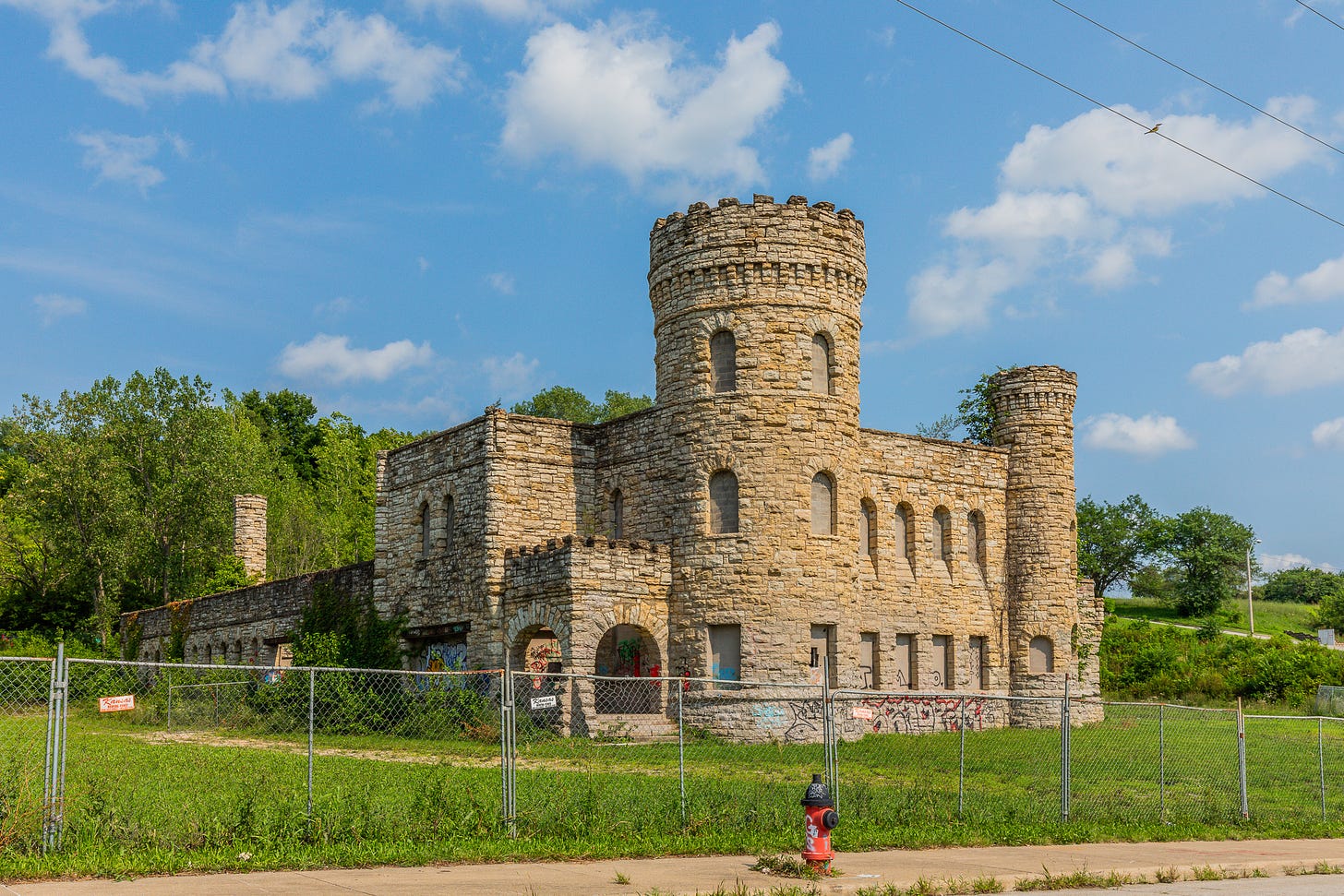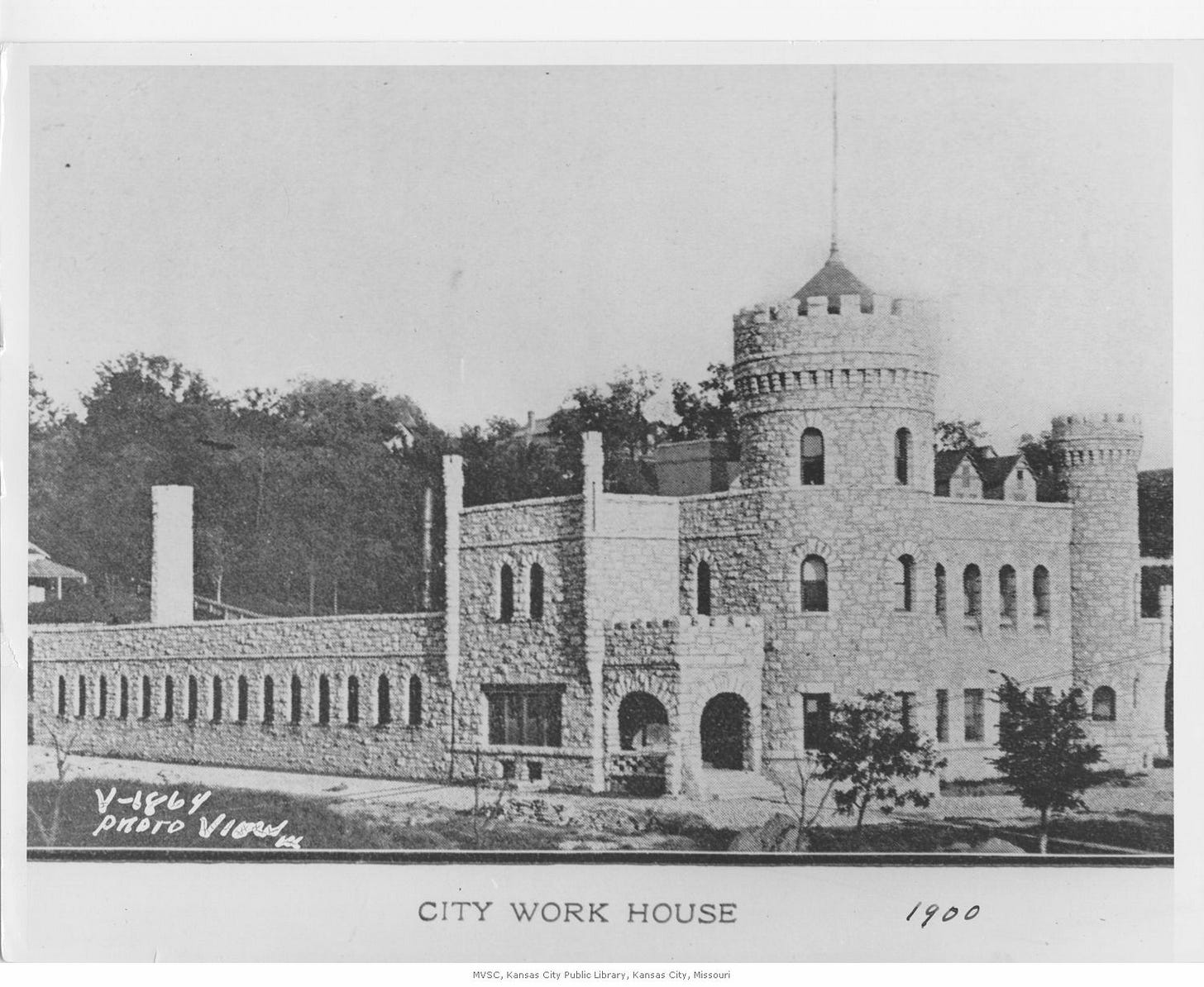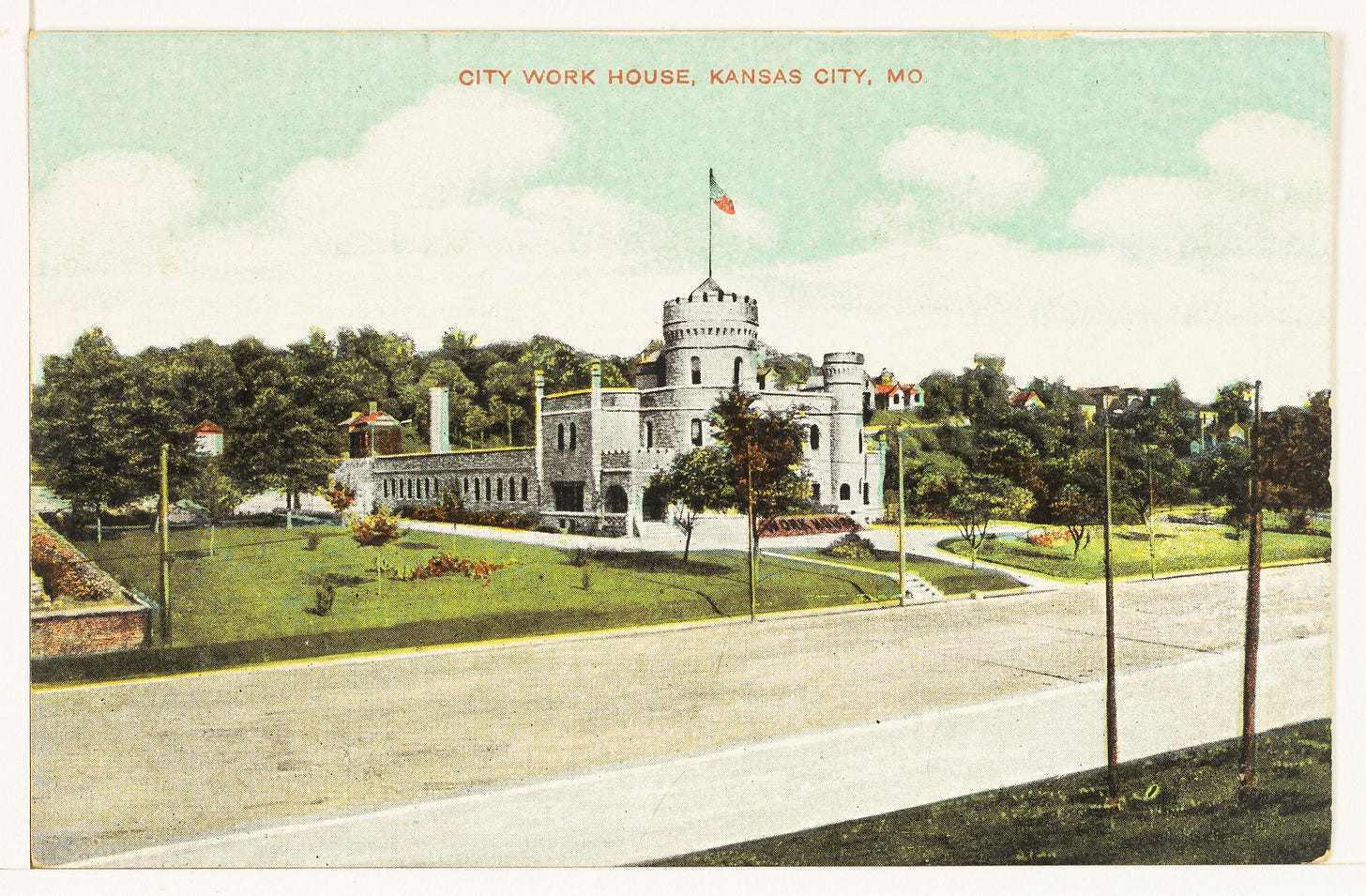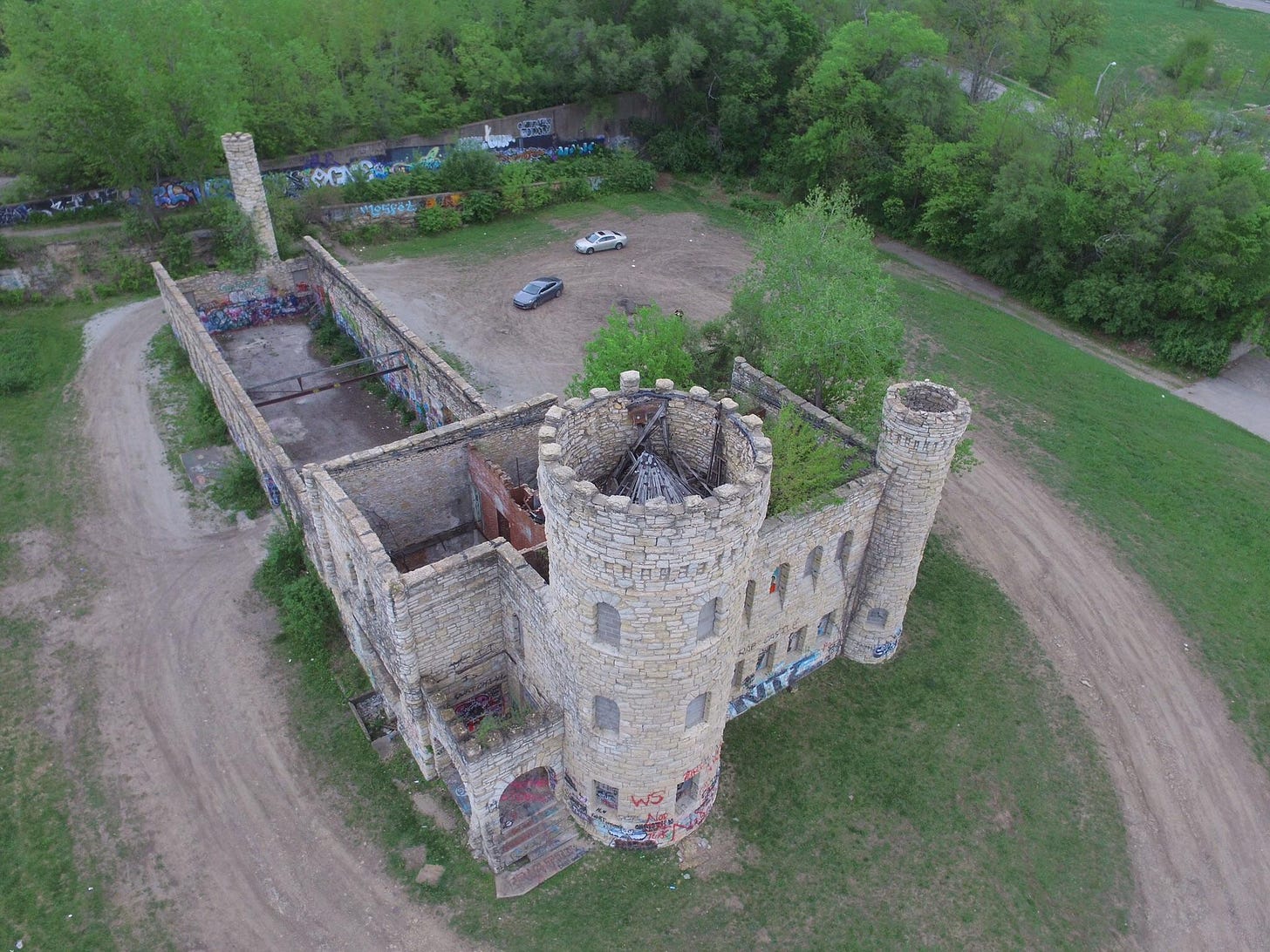The Story of the City Workhouse Castle
The Story of the City Workhouse CastleIf you were forwarded this email, click here to subscribe (it's free!) Read this story online | Sponsor this newsletter | Shop 📸
The City Workhouse Castle, also known as the Vine Street Workhouse Castle, has stood as a symbol of Kansas City's complex history since its construction in 1897. Located at 2001 Vine Street in the historic 18th and Vine District, the building was designed by Kansas City architects A. Wallace Love and James Oliver Hogg in the Romanesque Revival style, reflecting the popular architectural tastes of the city's upper class at the time. Built for $25,700, the castle was constructed with yellow limestone quarried by inmates who would later be held within its walls. The structure, which featured castellated towers and two-foot-thick limestone walls, was meant to be imposing, but it also served a dual purpose as both a high-security facility and a model of humane housing for Kansas City's petty criminals and vagrants.
Major Alfred Brant, the workhouse's first superintendent, envisioned the building as a place where offenders could find dignity and productivity through their labor for the city's public works. Initially, life in the City Workhouse Castle was intended to blend discipline with reform. Male inmates worked on labor projects, such as breaking rocks, while female inmates sewed uniforms. Brant even planned to teach young offenders basic skills, envisioning the castle as a possible reformatory. However, corruption and harsh conditions soon tarnished this vision. By the early 1900s, reports surfaced of prisoners being exploited for political and business interests, with some inmates subjected to brutal treatment.
Overcrowding, lack of medical attention, poor food, and unsanitary conditions drew public criticism and prompted reforms, including the eventual relocation of most inmates to a new facility at Leeds in 1911, which offered fresh air and more humane work opportunities. The City Workhouse Castle continued to hold female inmates until its closure as a correctional facility in 1924. After its closure, the castle took on new, often short-lived roles in the city. Over the next five decades, it served as a city storage facility and a Marine training camp, among other uses. Its last formal use was as a sewer department office in 1969, with the basement serving as a supply storage area. In 1972, the castle was abandoned, and over the next several decades, it became an infamous symbol of urban neglect. Its wooden interiors rotted away, and the remaining structure filled with trash, graffiti, and overgrown trees.
The castle became a cautionary example of Kansas City's struggles with historic preservation, blight, and broken redevelopment promises, changing ownership numerous times and surviving demolition proposals only after being listed on the Kansas City Register of Historic Places in 2007. In 2014, Daniel and Ebony Edwards, local community leaders, undertook a massive cleanup effort, removing 62 tons of trash from the castle grounds with the help of volunteers and a small grant. They dreamed of transforming the space into a community center, where locals could gather for events and activities. Though their vision ultimately faltered due to funding challenges, their efforts briefly brought the castle back to life. Since then, the structure has remained vacant, but interest in its potential persists. This Week's Featured Home425 Gladstone Blvd, Kansas City, MO 64124 Located in the Scarritt Point Historic District, this 5,200 sq. ft. Victorian home was formerly the Inn at 425 and is designed to function as a bed and breakfast, with three guest rooms in the main house and two suites in the carriage house. The home retains original features such as four fireplaces, leaded windows, pocket doors, and detailed woodwork, while incorporating modern updates, including a renovated kitchen with professional appliances. Outdoor spaces include wraparound porches, dining decks, a brick patio, koi pond, and garden areas. With its established lodging setup and high demand for urban accommodations, this property offers a unique investment opportunity.
Realtors: interested in sponsoring this section? Just email me at hello@kcyesterday.com! Thanks for reading, Reader! ps: The story of KC's first traffic signal 🚦 pps: What was the first movie ever shown in KC? (courtesy Sarah Biegelsen, KC Public Library) |
Stories from the City - History of Kansas City
Join thousands of others and discover Kansas City's captivating history every week with the exclusive newsletter from KC Yesterday. Sign up now to unlock fascinating stories about the mafia, architecture, prohibition, sports, and everything in between!
The Story of Sliced Bread’s Invention in Chillicothe If you were forwarded this email, click here to subscribe (it's free!) Read this story online | Sponsor this newsletter | Shop 📸 In the world of everyday innovations, few have had the staying power, or cultural impact, of sliced bread. And it all began in the small town of Chillicothe, Missouri, about an hour and a half northeast of downtown Kansas City. Here's the story! Mural in Chillicothe, MO. Courtesy http://www.homeofslicedbread.com/....
The Story of Lewis & Clark in KC If you were forwarded this email, click here to subscribe (it's free!) Read this story online | Sponsor this newsletter | Shop 📸 On this day in 1804: the Lewis & Clark expedition arrived at Kaw Point and explored the area for 3 days. Here's the story! Lewis & Clark statue at Kaw Point Park. Courtesy - Taylor Sloan / Flickr On May 14, 1804, under the directive of President Thomas Jefferson, Captain Meriwether Lewis and Lieutenant William Clark embarked on an...
The Story of the TWA Building + Rocket in the Crossroads If you were forwarded this email, click here to subscribe (it's free!) Read this story online | Sponsor this newsletter | Shop 📸 The TWA Corporate Headquarters, located at 1735 Baltimore Avenue in Kansas City’s Crossroads district, served as the nerve center for Trans World Airlines (TWA) from 1956 to 1964. Designed in the International Style by architects Raymond Bales Jr. and Morris Schechter and built by Long Construction Company,...




